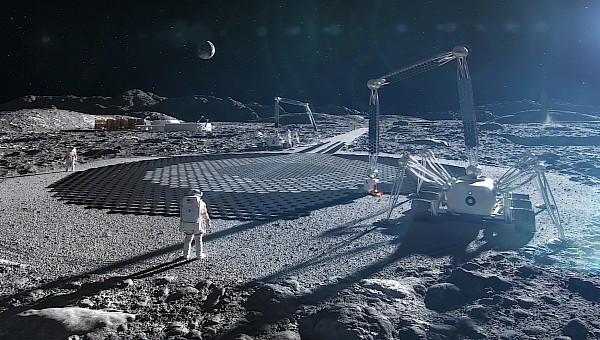It’s a brave new world we live in, in more than one respect. The most exciting part of this modern-day living, at least for some people, is the new space race we’re engaged in.
The Moon is the immediate focus of our attention, and the recently-departed Artemis I mission will open its doors not only to more visits there, but also the colonization of the place. That’s right, this time we’re going to the Moon to stay.
To do that, humans will need pretty much the same things as here on Earth, namely habitats and roads. Because getting there requires rockets and spaceships capable of touching down, we’ll also need landing pads. And all of these could come to be through 3D printing.
Back in the fall of 2020, NASA awarded a specialized company called Icon a Small Business Innovation Research (SBIR) contract for a project called Olympus – printing a Moon base using 3D printing. Icon is spearheading this field, already being involved in making 3D-printed homes for civilians or a Lavacrete structure capable of housing a HIMARS for the military.
This week, NASA announced Icon is moving into Phase III of SBIR, with a $57.2 million contract that runs until 2028 and calls for the company to find ways of creating the tech needed to build landing pads, habitats, and roads on the lunar surface, using locally-sourced materials.
"In order to explore other worlds, we need innovative new technologies adapted to those environments and our exploration needs," said in a statement Niki Werkheiser, director of technology maturation in NASA's Space Technology Mission Directorate (STMD). "Pushing this development forward with our commercial partners will create the capabilities we need for future missions."
The details on the Olympus project will be the subject of an in-depth look here on autoevolution in the coming weeks, so keep an eye out.
To do that, humans will need pretty much the same things as here on Earth, namely habitats and roads. Because getting there requires rockets and spaceships capable of touching down, we’ll also need landing pads. And all of these could come to be through 3D printing.
Back in the fall of 2020, NASA awarded a specialized company called Icon a Small Business Innovation Research (SBIR) contract for a project called Olympus – printing a Moon base using 3D printing. Icon is spearheading this field, already being involved in making 3D-printed homes for civilians or a Lavacrete structure capable of housing a HIMARS for the military.
This week, NASA announced Icon is moving into Phase III of SBIR, with a $57.2 million contract that runs until 2028 and calls for the company to find ways of creating the tech needed to build landing pads, habitats, and roads on the lunar surface, using locally-sourced materials.
"In order to explore other worlds, we need innovative new technologies adapted to those environments and our exploration needs," said in a statement Niki Werkheiser, director of technology maturation in NASA's Space Technology Mission Directorate (STMD). "Pushing this development forward with our commercial partners will create the capabilities we need for future missions."
The details on the Olympus project will be the subject of an in-depth look here on autoevolution in the coming weeks, so keep an eye out.







